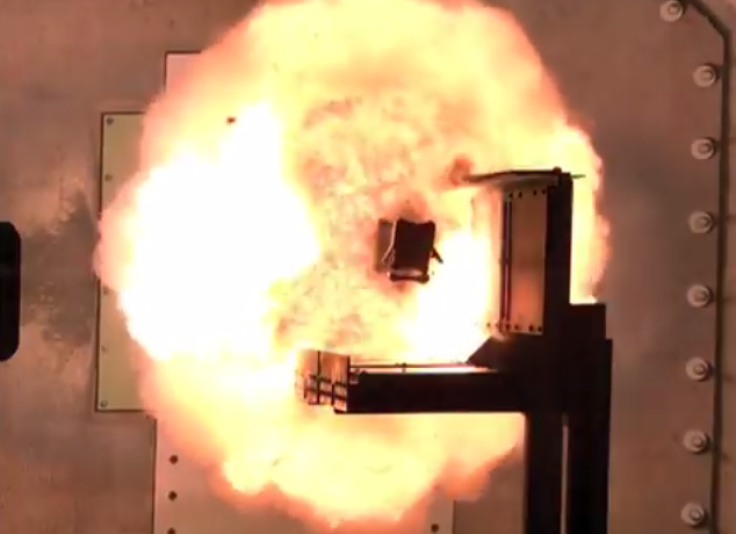U.S. Navy 'Sci-Fi' Weapons: Solid-State Laser Deployment Set For 2014, Electromagnetic Rail Gun By 2016 [VIDEO]

For the U.S. Navy, the future of weapons technology is now. The Office of Naval Research has been working with "sci-fi" technology such as solid-state lasers since 2012, and now has announced plans to deploy its first laser gun on a ship by year-end and continue developing an electromagnetic rail gun, to have a prototype ready by the end of 2016.
According to the Associated Press, the U.S. Navy is set to deploy its first laser on a ship by the end of 2014. The U.S. Navy has been testing a solid-state laser for a few years and will deploy the laser aboard the USS Ponce during the summer. Chief of Naval Research Rear Admiral Matthew Klunder said a shot from a laser costs less than $1 and makes for an incredibly versatile weapon for the Navy.
Peter A. Morrision, program officer for ONR's Solid-State Laser Technology Maturation Program, said in a statement: "The solid-state laser is a big step forward to revolutionizing modern warfare with directed energy, just as gunpowder did in the era of knives and swords." Unlike what's portrayed in the movies, AP notes, the lasers will not emit a glowing beam; instead, the shots will be invisible.
As the AP notes, a laser weapon can fire continuously, targeting threats such as drones and speedboats. But some disadvantages to a laser weapon system include rain, dust and other environmental conditions that can affect accuracy and range.
With a laser weapon set to be deployed later this year, another futuristic weapon will soon become a reality. As with the laser, the U.S. Navy has been developing an electromagnetic rail gun over the past few years. Such a gun uses magnetic fields to accelerate a metal conductor, which fires a projectile that can reach speeds six or seven times faster than the speed of sound, notes AP, with the U.S. Navy reporting speeds of 4,500 to 5,600 miles per hour. Land-based prototypes have been tested and the Navy hopes to deploy a rail gun within the next two years, reports AP.
The biggest setback with an electromagnetic rail gun is the energy required. According to the AP, only one ship, the Zumwait destroyer (currently under construction), has the capability to be equipped with a rail gun, although that technology will become more widely available over the next few years.
The Office of Naval Research established the Solid-State Laser Technology Maturation Program in 2012, but the U.S. Navy has been funding laser-based research since the 1960s. According to the Navy, "Lasers can provide measured weapon effects, matched with extremely deep magazine capacities to defend against multiple, simultaneous arriving threats potentially posed against Naval surface forces: armed, unarmed ISR (Intelligence, Surveillance or Reconnaissance) or lethal UAVs (unmanned aerial vehicles); light aircraft; small boats; asymmetric surface targets; or small diameter rockets and missiles."
A video of the U.S. Navy's Laser Weapon System can be viewed below.
© Copyright IBTimes 2024. All rights reserved.












